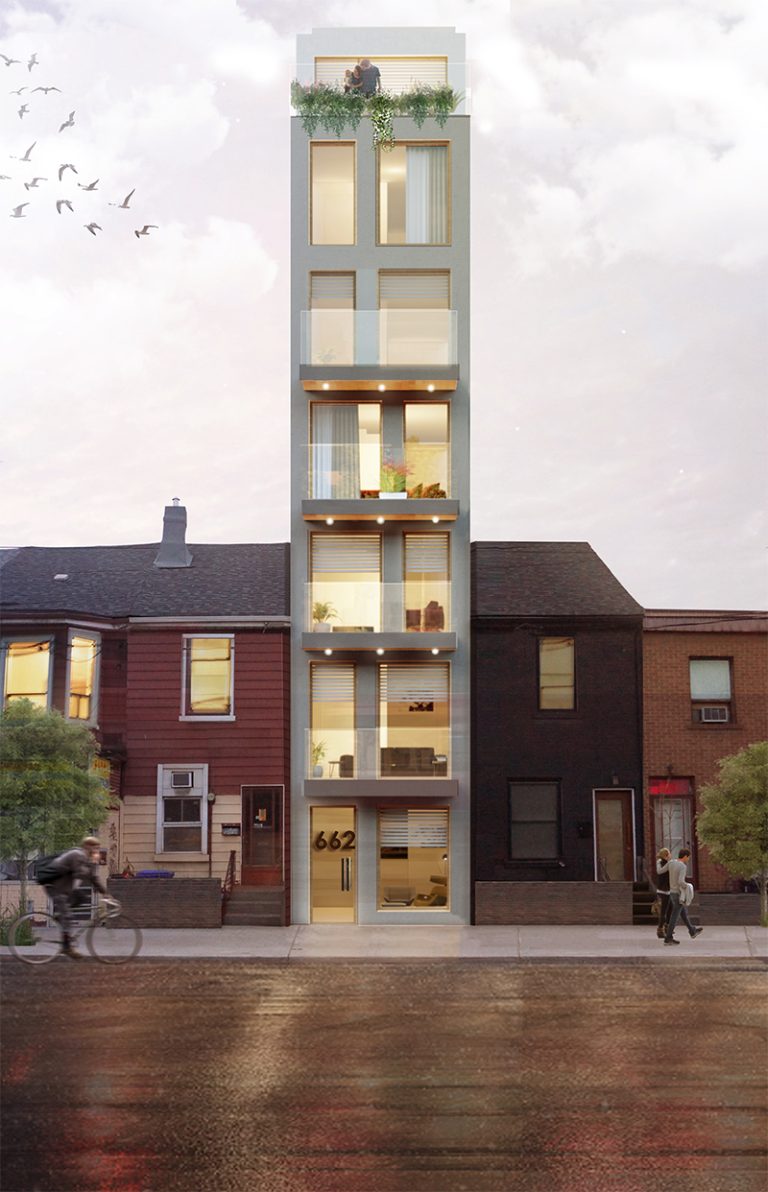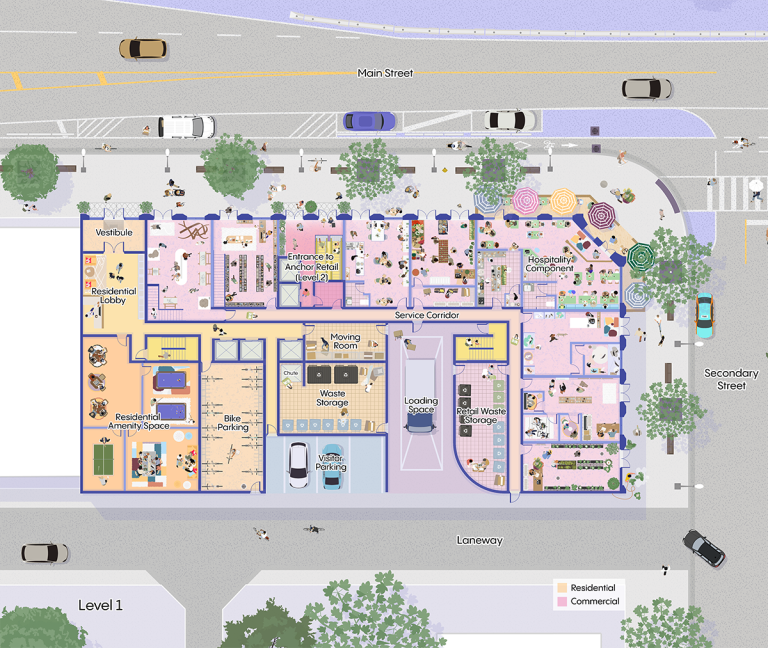How Other Cities in the U.S. and Canada Implement Missing Middle Policies?
Written by: Misha Bereznyak and Josh Papernick
In July 2019, Mayor John Tory and Deputy Mayor Ana Bailão passed a motion that directed the planning department to consider new forms of development in Toronto’s ‘Neighbourhoods’. ‘Neighbourhood’ is a land use designation in Toronto’s Official Plan, that in most cases, limits development to single-family homes. This designation (marked in yellow on the land use map) applies to most of the city’s land area; this vast area has been nicknamed the ‘Yellow Belt’ to liken its role in restricting the development of housing to that of the Green Belt.
In July 2020, the City released a report titled Expanding Housing Options in Neighbourhoods that explored ways to allow ‘Missing Middle’ housing forms such as duplexes, triplexes, low-rise apartments, garden suites behind houses, and rooming houses everywhere in these exclusively zoned areas.
Toronto is not alone in its exploration of the Missing Middle. Several other cities in North America have also implemented or are close to approving policies that will encourage the development of Missing Middle housing that Toronto may be able to learn from. Here is a short overview:
Portland, Oregon
Portland recently made headlines when its City Council approved the most significant pro-housing reform of low-density residential zoning in the history of US planning. Its ‘Residential Infill Project’ will legalize up to four homes on nearly any residential property, with the potential to build as many as six homes if at least 50% of units are made to be affordable. Additionally, parking requirements will be waived on approximately 75% of the residential lots, making parking spaces optional for the increasing percentage of people who choose not to own a vehicle.
Detached houses will also now be permitted to have two accessory dwelling units and duplexes to have one. Several nuances exist within these guidelines. For example, if three units are physically attached, that structure is deemed to be a triplex, not a primary dwelling with two attached accessory dwelling units.
Seattle, Washington
In 2018, Seattle released a report called “Neighbourhoods for All” that recommended changing single-family zoning to a classification titled Neighbourhood Residential that would permit the approval of more dense types of housing. In 2019, it passed an initiative titled ‘Mandatory Housing Affordability’; later in 2019, City Council voted to reform accessory dwelling unit (ADU) regulations in Single Family zones. The legislation makes it easier for homeowners to build both a detached and an attached ADU on the same lot as the principal home. Additionally, in its Lowrise Multifamily zones, which existed before these changes, the permitted densities for townhouses and small apartment buildings can often allow housing forms denser than triplexes.
Seattle benefits from an established independent body, the Seattle Planning Commission (SPC), which is composed of 16 professionals that advise the Mayor, City Council, and municipal departments on planning goals and policies.
Minneapolis, Minnesota
In 2019, Minneapolis City Council approved a comprehensive plan titled ‘Minneapolis 2040’ to permit triplexes in its single-family residential neighbourhoods, while also allowing high-density buildings along transit corridors and removing minimum parking requirements for all new construction. The plan acknowledges the role that zoning regulations and past housing policies have played in shaping the city’s housing inequities, and one of the goals of the plan was for Minneapolis to address racial disparities in economic, housing, safety and health outcomes.
Austin, Texas
In 2019, Austin City Council passed a density bonus program titled “Affordability Unlocked” that will loosen zoning restrictions and provide incentives for higher density housing in affordable and mixed-income developments. In single-family zones, applicants who qualify will be able to build to a height limit of 1.25 times the base zoning limit, as well as include a total of six units on a lot. The revision of Austin’s Land Development Code (LDC) has yet to be adopted by Council and is currently on hold pending a court on an appeal to the plan.
Density Transition Zones
Bellevue Tacoma in Washington and Chula Vista, Davis and El Cerrito in California have implemented policy approaches similar to Density Transition Zones (DTZs) to promote low-rise residential intensification within their Neighbourhood areas. DTZs are used to create intermediate zones between areas of higher density and growth and lower-scale neighbourhoods.
City to Watch
The City of Los Angeles‘ Zoning Code was first adopted in 1946, and its overall structure has remained the same even though the needs of its city have changed significantly. In response, LA recently undertook a comprehensive revision of its Zoning Code. The new zoning contains ‘Density Districts’ which correspond to maximum densities, that either limit the number of dwelling units and guest rooms allowed based on lot area or indicate a fixed flat limit on the number of dwelling units allowed per any lot.
Lot-based districts will be designated either 1L, 2L, 3L or 4L, which indicate the maximum number of dwelling units permitted on a lot (i.e. 1, 2, 3, or 4). However, the preliminary draft of the new Zoning Code isn’t prescriptive about where the new Density Districts will be applied.
Initially, the new Zoning Code will just be incorporated across the Downtown Community Plan (DTLA 2040), where density is only limited by Floor Area. As the new Zoning Code is applied to additional Community Plan areas across the city, community planners will work with communities to figure out which Density Districts are appropriate for each area.
In Canada
Vancouver, British Columbia
The City of Vancouver has made positive steps toward loosening its zoning through the re-legalization of duplexes as part of its 2018 ‘Making Room’ policy. However, because the city still requires parking, it is difficult to add infill in many cases. Seattle is facing similar issues for the same reason.
Although Vancouver has had less support to enable city-wide missing middle housing forms beyond duplexes, it is developing new rental zones as part of implementing its ‘Secured Rental Policy’. As part of the Policy, on arterial roads, market rental apartment buildings of 5 storeys may be considered on blocks zoned residential (RS/RT), with rental buildings up to 6 storeys where a minimum 20% of the residential area is secured at below-market rents that are affordable to households with incomes of $80,000 or less.
Edmonton, Alberta
The City of Edmonton’s ‘Infill Road Map’ initiative supports improved medium-scale infill development. The City conducted a review to identify what regulation changes were needed to reduce barriers that prevent the development of missing middle housing, and in August 2019, its City Council approved changes to its Zoning Bylaw 12800.
The approved changes include a clear progression in residential zones from Small Scale Infill Development (RF3) all the way to Medium Rise Apartment (RA8) by increasing the scale of housing allowed between each zone. Another change allows both a secondary suite and garden suite to be developed with single detached houses in lower density zones. In addition, density minimums were introduced in certain zones to help meet their stated purposes, as well as incentivizing larger units that can accommodate larger households.


